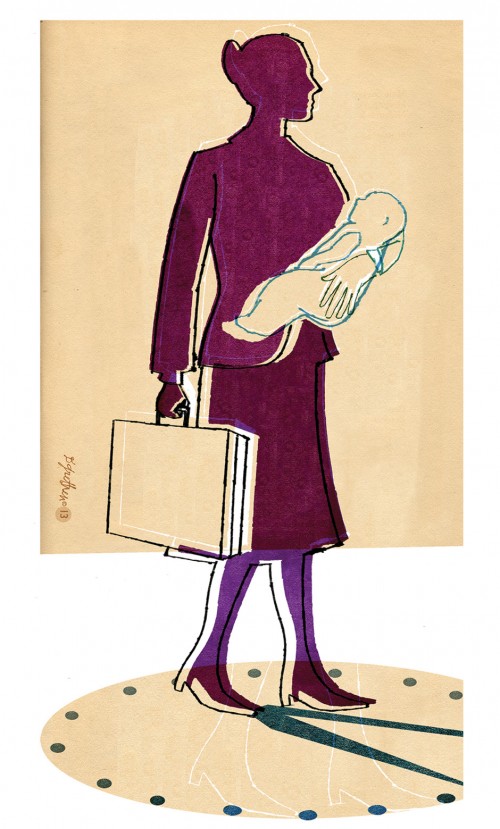
Although past studies have found little evidence that women are opting out of the workforce in general, first-of-its-kind research shows that female graduates of elite undergraduate universities are working many fewer hours than their counterparts from less selective institutions.
“Even though elite graduates are more likely to earn advanced degrees, marry at later ages, and have higher expected earnings, they are still opting out of full-time work at much higher rates than other graduates, especially if they have children,” says Joni Hersch, Vanderbilt 2012/13 FedEx Research Professor, professor of law and economics, and professor of management.
Her research finds that 60 percent of female graduates from elite colleges are working full time compared to 68 percent of women from other schools. Labor-market activity is lower for women with children, but the gap between women with and without children is largest for elite graduates. Among elite graduates, married women without children are 20 percentage points more likely to be employed than their elite counterparts with children, while among non-elite graduates, the difference in the likelihood of employment is 13.5 percentage points.
When comparing graduates from elite and less selective schools, Hersch found the largest gap in full-time labor-market activity among women who also earned a master’s degree in business.
“Married MBA mothers with a bachelor’s degree from the most selective schools are 30 percentage points less likely to be employed full time than are graduates of less selective schools,” she says.
The full-time employment rate for MBA moms who earned bachelor’s degrees from a tier-one institution is 35 percent. In contrast, full-time employment for those from a less selective institution is 66 percent. The gap remains even after taking into account the selectivity of the MBA institution, personal characteristics, current or prior occupation, undergraduate major, spouse’s characteristics, number and age of children, and family background.
“Elite workplaces, like Fortune 500 companies, prefer to hire graduates of elite colleges,” notes Hersch. “Thus, lower labor-market activity of MBAs from selective schools may have both a direct effect on the number of women reaching higher-level corporate positions as well as an indirect effect because a smaller share of women in top positions is associated with a smaller pipeline of women available to advance through the corporate hierarchy.”
Hersch found a similarly large gap among women who later earned a master’s in education. Sixty-six percent of tier-one graduates are employed full time compared to 82 percent of graduates from non-elite institutions.
Other factors contribute to which women are working more hours. “Estimates show greater labor activity among women with a bachelor’s degree in a field other than arts and humanities; those with graduate degrees; those in higher-level occupations such as management, science, education and legal; and women who are not white,” says Hersch.
But are highly educated women willingly choosing to exit the labor force to care for their children—or might they be “pushed out” by inflexible workplaces? Hersch says the hypothesis of inflexible workplaces doesn’t explain why labor-market activity differs between graduates of elite and non-elite schools.
“Graduates of elite institutions are likely to have a greater range of workplace options as well as higher expected wages than graduates of less selective institutions, which would suggest that labor-market activity would be higher among such women,” she writes.
“Without discounting the well-known challenges of combining family and professional responsibilities, increasing workplace flexibility alone may have only a limited impact on reducing the gap between graduates of elite and non-elite schools.”
Hersch gathered her data from the 2003 National Survey of College Graduates, which provided detailed information for more than 100,000 college graduates. The survey was conducted by the U.S. Census Bureau for the National Science Foundation.
To identify schools considered elite and to put these schools into tier levels, Hersch used both the Carnegie Classifications of institutions of higher education and Barron’s Profiles of American Colleges.
Read Hersch’s paper “Opting Out among Women with Elite Education.”